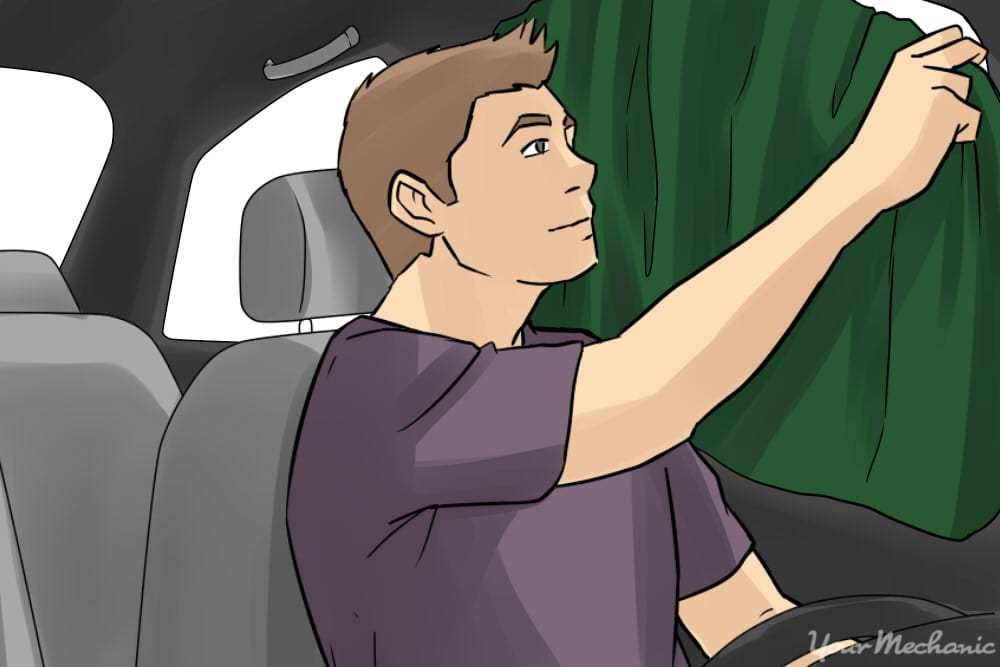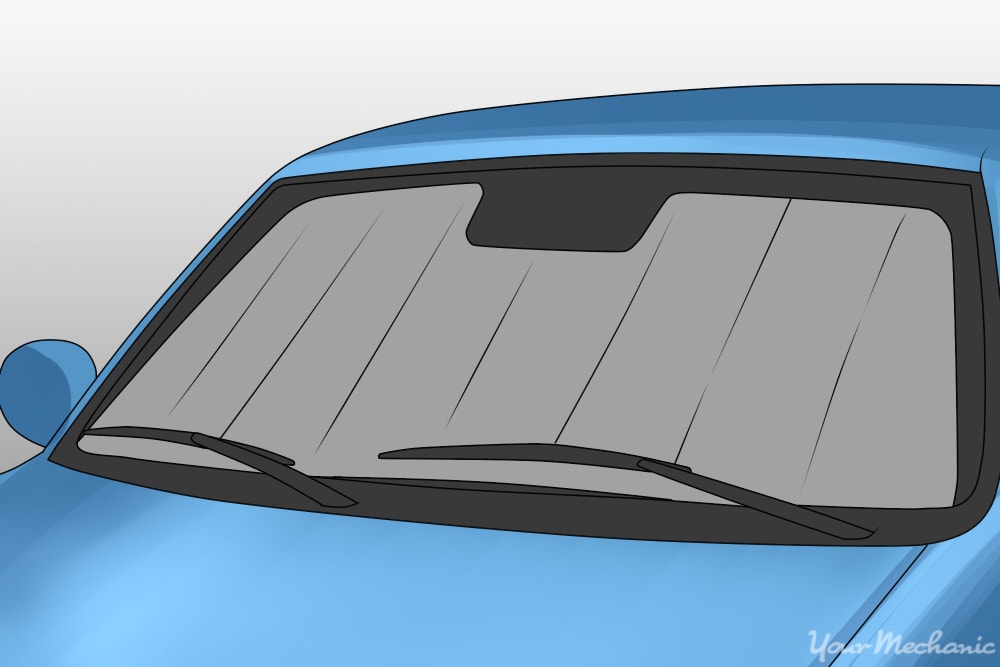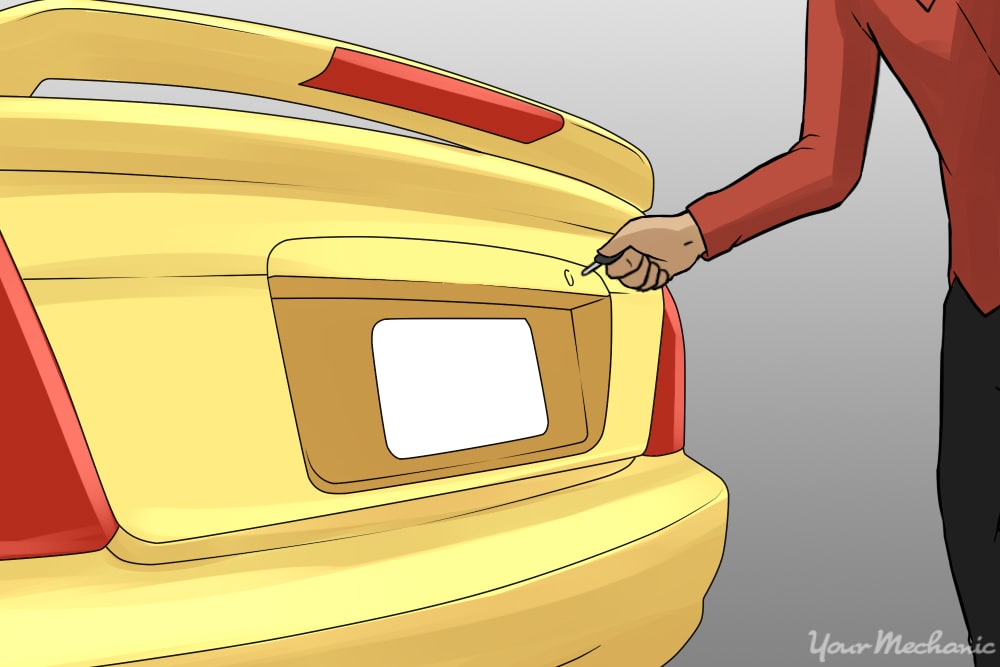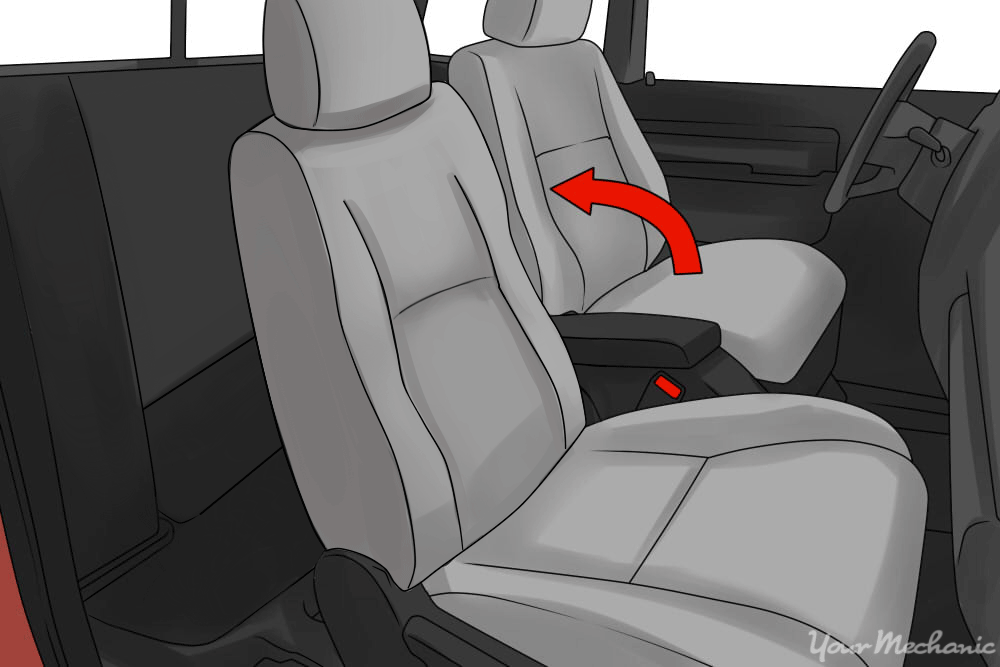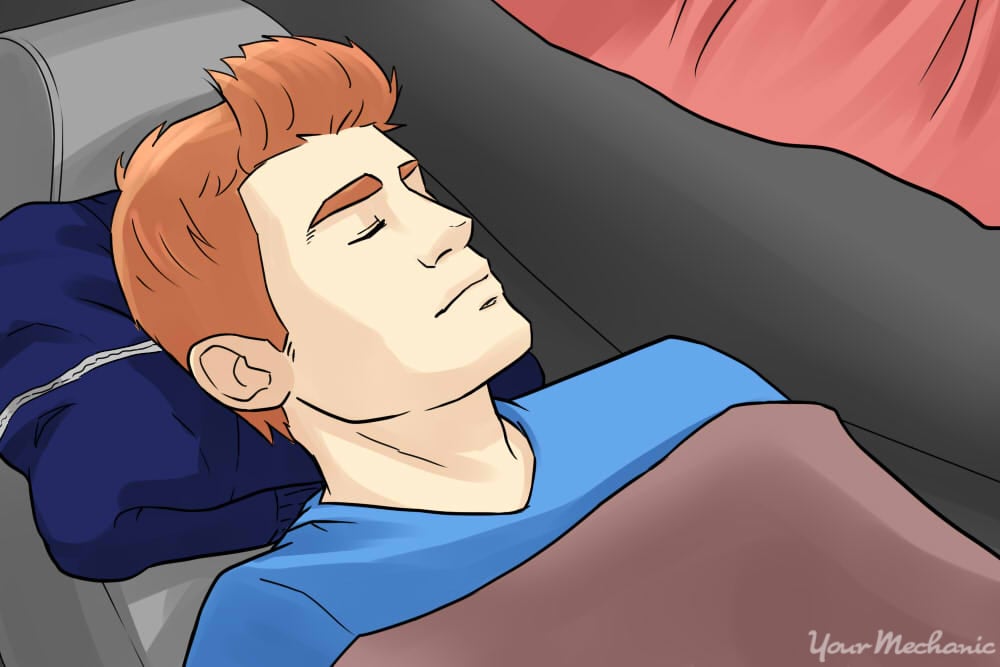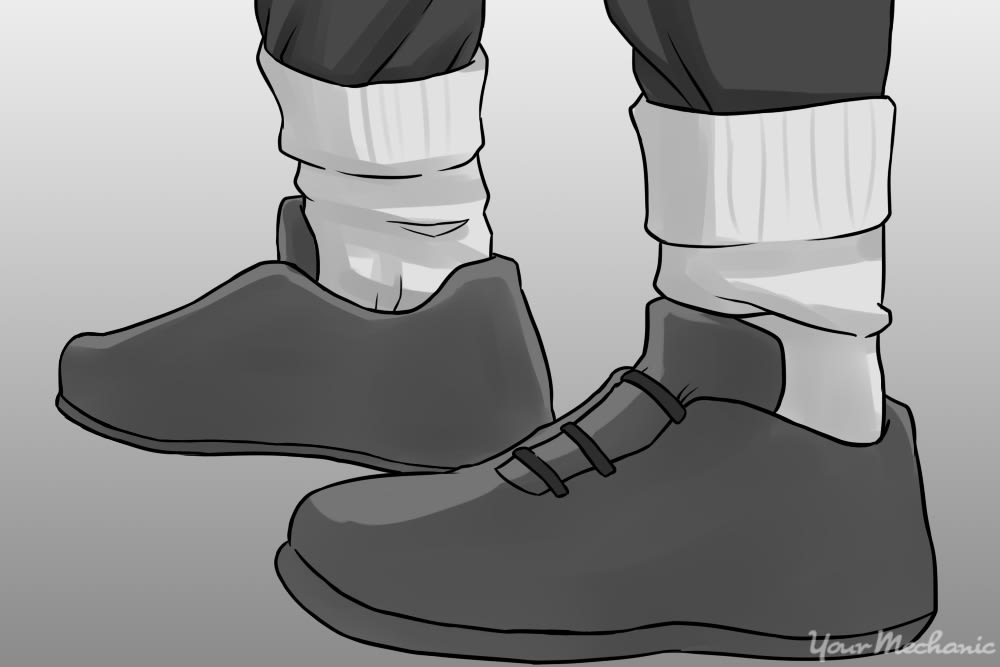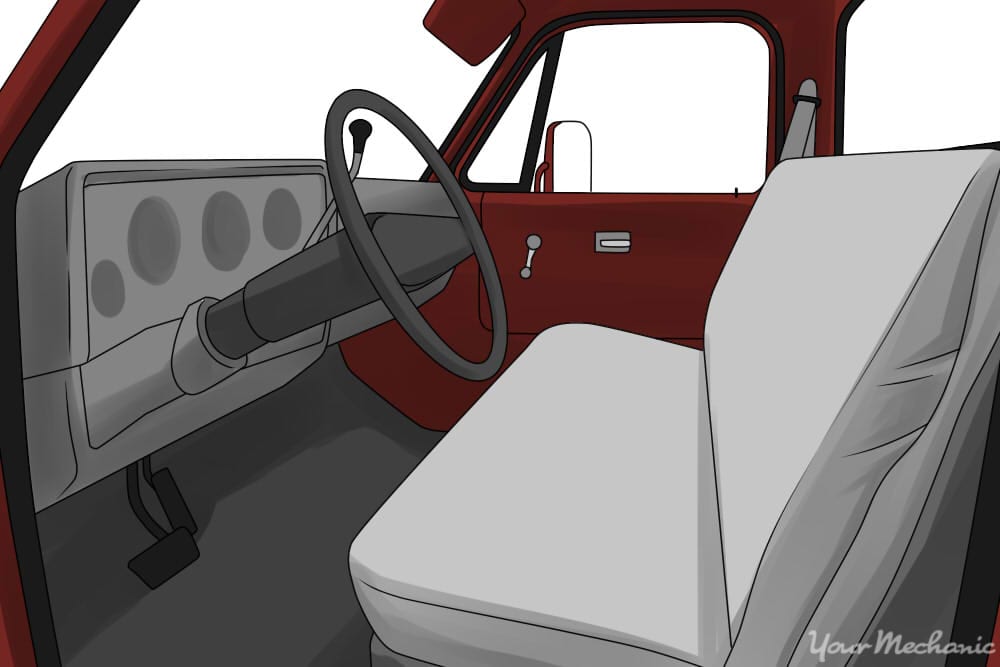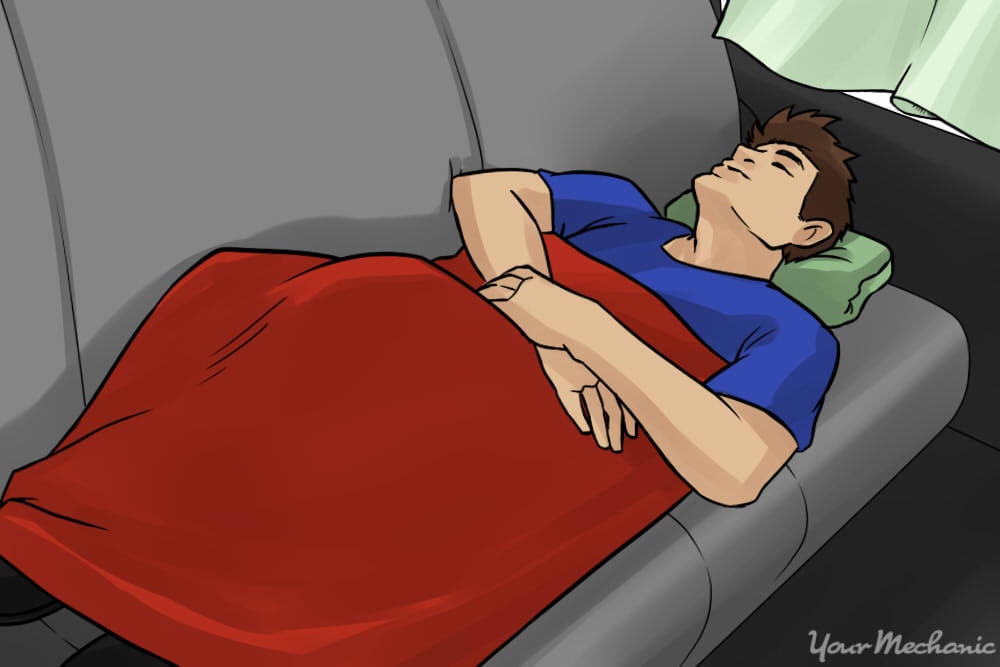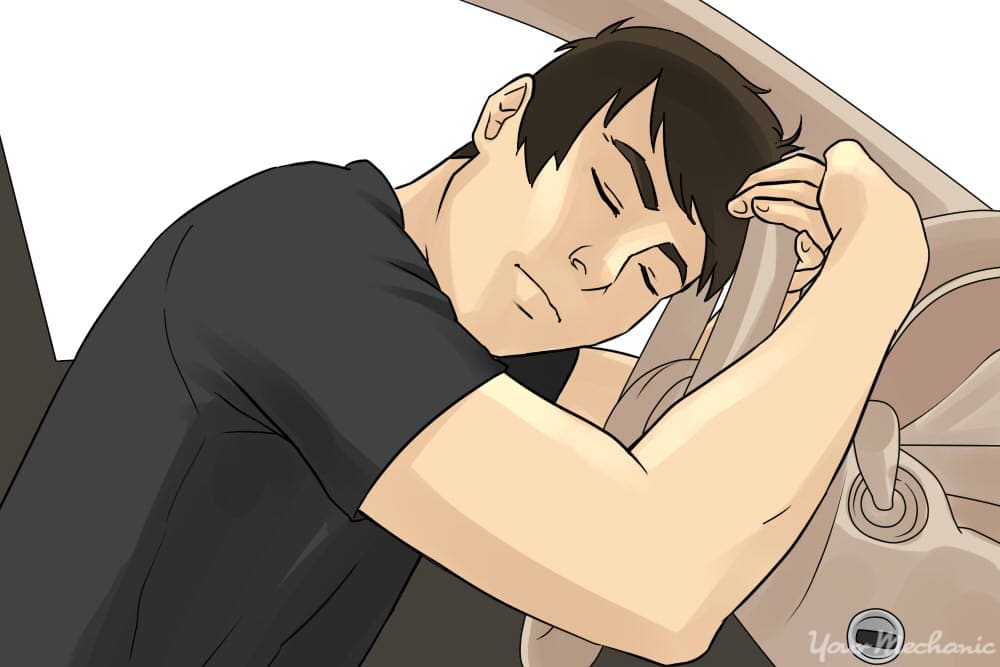

Whether you are traveling alone and need to pull over for a quick rest or camping out in a rural area, knowing how to properly make camp in your car is an invaluable skill. Sleeping in your car, in general, is not advised. A car provides only a basic level of security, and the windows leave the occupants fairly exposed in most instances.
However, being in a car does have its advantages. If you ever feel uncomfortable, you can start it up and drive away. It also provides a great shelter from the rain. The key to making a suitable bed inside of your car is to make something that can be packed up quickly once you wake up so you can resume your journey. The right technique depends on the layout of the seats.
Part 1 of 3: Prepping your car to camp
Step 1: Take note of any materials in your car. Take inventory of any materials around the car that can be used for either making a bed or covering the windows. This includes spare articles of clothing (coats and sweaters work best), towels, and blankets.
Step 2: Cover the windows. To add a little extra privacy, the windshield and windows can be covered from the inside.
The windshield can be covered with a sunshade or similar. Note that a semi-rigid material like this must be held in place by folding the visors forward.
Towels, blankets, or articles of clothing can be inserted into the top of the windows by rolling them down slightly then rolling them up carefully so that they hold the material in place.
- Tip: Don’t cover the windows or windshield from the outside. If there is any sort of threat outside of the vehicle, it is important to be able to drive off without having to exit the vehicle.
Step 3: Lock up your car. Lock all of the doors and the trunk. In cars with automatic locks, locking the doors should also automatically lock the trunk. In cars with manual locks, make sure the trunk is locked before making camp inside of the car.
Step 4: Turn off the engine. Sleeping in or around a running vehicle is extremely dangerous, so don’t even consider going to sleep until the engine is shut off.
You may use electronics as long as you can keep an eye on the level of charge in the battery. If you do not have a gauge for the power level left in the battery, use electronics sparingly. Using the vents to bring in fresh air or heat, assuming the engine is still warm, is a good alternative to opening the windows if the weather conditions don’t allow for an open window.
In extremely cold weather, the engine has to be run to use the heater, so run the engine in short bursts, but only when necessary. Stop the engine as soon as it reaches an acceptable temperature.
Warning: Make sure you are taking in fresh air while doing this and not circulating the air in the cabin. There is a chance that exhaust fumes could leak in while the engine was running with the car parked.
Tip: A car battery booster can be used both as a portable power source and as an emergency booster if the car battery dies. If you camp overnight in your car often, it’s a good idea to take one with you.
Part 2 of 3: Sleeping in bucket seats
Step 1: Lean the seat back. The first thing you have to do when preparing to sleep on a bucket seat is lean the seat back as far back as it can go, making it as close to horizontal as you can.
Most seats can at least be adjusted to lean back, but more complex seats can have over a dozen different directions in which they can be adjusted.
If the lower part of the seat can be adjusted, move it in a way that will allow your back to rest in a relaxed position while you sleep.
Step 2: Cover the seat. Cover the seat in any fabric available to help with cushioning and insulation. A blanket works best for this, but if you only have one blanket available then it is more useful to cover yourself with that and cover the seat in towels or sweatshirts.
The most cushioning is needed around your head and neck, so it is important to either use a pillow or fashion an adequate cushion prior to sleeping.
Step 3: Cover yourself. The last step before drifting off to sleep is to cover yourself with something to provide warmth. Your body temperature drops while you sleep, so it is important to be adequately warm throughout the night.
A sleeping bag is optimal, but a normal blanket works fine as well. Try to wrap the blanket completely around yourself while sleeping, taking extra care to cover your feet.
In a pinch, you may be completely unprepared to camp and may not have a blanket handy. Just make something into a pillow and make the clothing on your body as insulating as possible. Zip up sweaters and/or jackets, and pull up socks and tuck pants into them if the temperature is low.
Part 3 of 3: Sleeping on a bench seat
Step 1: Repeat Part 2, Steps 2-3. Sleeping on a bench seat is the exact same as sleeping on a bucket seat except for two things:
- You cannot stretch out fully.
- The surface is basically flat. Because of this, a good pillow or other head support is crucial.
Step 2: Position yourself as best you can. On a bench seat, only the most spatially-efficient motorists can lay stretched out. The rest end up scrunched up in an awkward position. Save yourself the pain and trouble; focus on keeping your back level and your head supported when drifting off to sleep.
- Tip: If any limb begins to “fall asleep” while going to sleep, then you need to change your position until the circulation to that limb improves. Otherwise you risk waking up to more aches and pains than you went to sleep with.
In the end, if you need to sleep or camp in your car, be sure to do so in a way that ensures safety, privacy, and the optimal use of the materials at hand for comfort. While sleeping in your car may not be ideal, with this guide, you should be able to make it work in a pinch.
For times when you find you need to live in your car for a period of time, or even just for an extended camping trip, see our other article, How to Live in Your Car for a Short Time, for further information.


